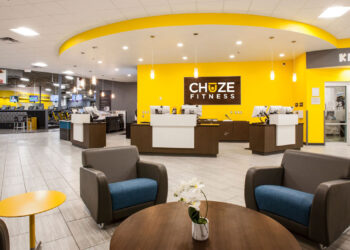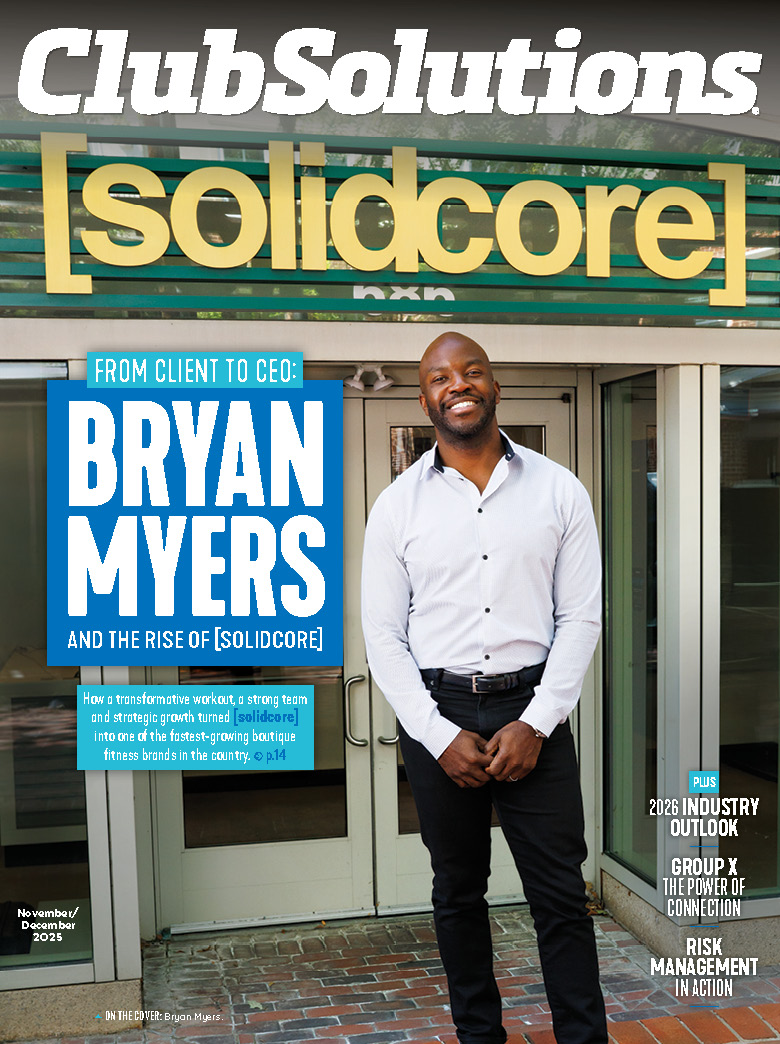I look down at my wrist and notice my 10 a.m. “get up and walk” alarm has begun to vibrate. I have been sitting for two hours and my wearable is reminding me that movement every few hours (at minimum) is my daily aim.
This notion is not an unfamiliar one to many. All over the world people have become data-driven and know a lot about their own health. If you think back 10 years ago, most consumers had to go somewhere to obtain this level of accountability and know how. If one wanted to get in shape, it was dependent on a trainer to tell you how to do it. They would write a plan and describe how to eat, exercise and move your body to obtain results. Today, a simple download of a mobile app and a wearable fitness device puts the consumer in charge of their own fitness journey.
So has the role of the health club within the fitness industry changed?
Are we now simply a supporter of individual plans that are already happening? More often than not, consumers are walking into health clubs to support their existing plan, instead of looking to begin one all together.
Considering this as the new normal, how does the role of the health club change?
If consumers are walking in to join a club because they have a plan and goal in mind and the club assists them in executing, how then shall the industry show up for the consumer?
Not only is this an enormous shift in perspective, it is most certainly an opportunity to innovate from a club perspective.
Consider new roles outside of the traditional ones. Possibly you have a staff person that is totally focused on member retention via mobile relationships. Their sole responsibility might be to create community via Twitter, Facebook and even wearable platforms for members to interact. I know my wearable has the ability for me to be in step competitions with my friends. Why wouldn’t a health club create a group you can opt into so you can size yourself up to other members at your gym, and possibly create new friendships by meeting up for a workout?
The most important thing about this new way is to not be afraid, as the opportunity far outweighs the potential loss. If embraced with enthusiasm there is certainly more to be gained from innovating with consumers taking charge of their health, than ignoring the new way.
How will you evolve your consumer strategy to sync up with the world today?
Thank you for reading!
Stay ahead in the fitness industry with exclusive updates!
Lindsey Rainwater is an experienced business advisor, executive coach and the founder of The Women in Fitness Association (WIFA). WIFA is the global association supporting women in their career trajectory helping them rise to their fullest potential in business and life.












well written Lindsey – the key is to have a strategy that don’t BOLT on but rather EMBEDS with your existing bricks and mortar club – , are you using wearable’s to help enhance PT, are you using them to validate the high intensity workouts of SGT and illustrate why these classes cost $20, are you using it as a rewards platform to encourage exercise over time, or are you using it like a fun run (challenges) with the masses to encourage usage and retention. Emmett from MYZONE
Hi Emmett!
Thank you for your comment!
I appreciate your perspective and most certainly agree with your viewpoint! (Love MYONE 🙂
Lindsey
Hello Lindsey –
Thank you for the post.
I think you are missing the real value in members movement towards quantifying their fitness.
If a member is willing to share their data with a club it is an opportunity to form a deeper relationship in working together to help the member reach their fitness goals.
The data can be used to set goals, track progress and reward achievement.
If the club is a part of the members success retention will not be an issue.
Jonathan
Hi Jonathan,
I agree that member trust and deeper relationship is totally the aim, I appreciate your comment and I believe we are both certainly in favor of the member having an elevated experience!
Lindsey
Technology is amazing! Just by strapping on a watch you can now find out the condition of your body!People can monitor their body and take action in time. Professional advice is always recommended. Health clubs and gyms will remain integral as always since they can provide the necessary motivation and guidance to help people achieve the desired result.